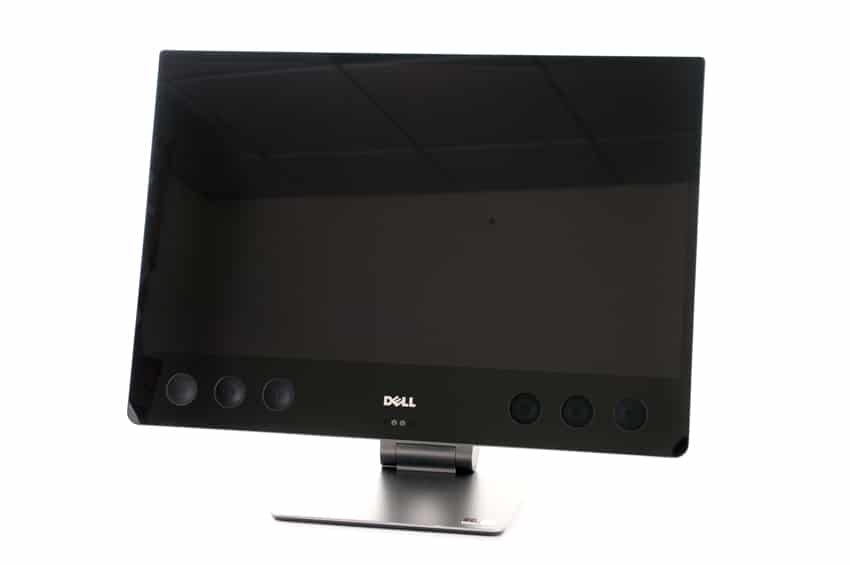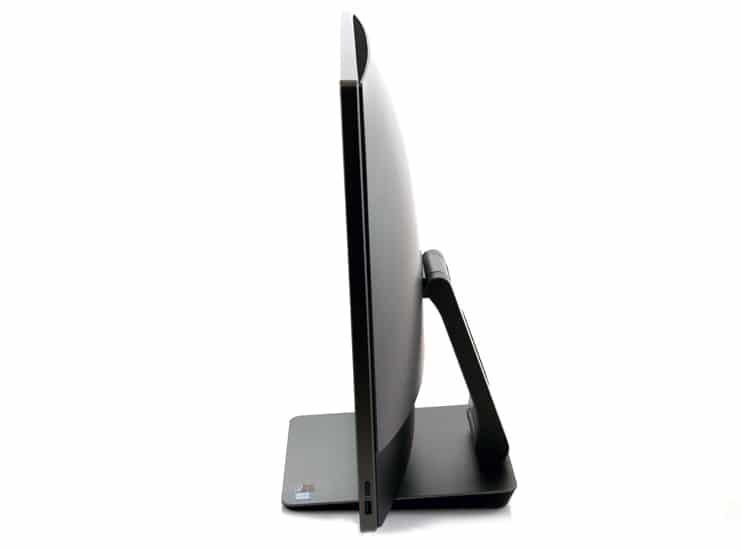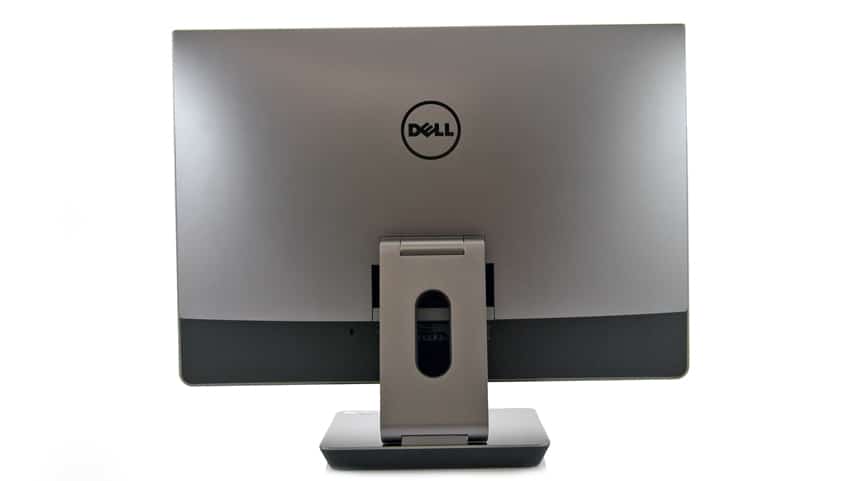
The Dell Precision 5720 is the company’s newest all-in-one desktop offering designed specifically for media professionals. This new workstation features a plethora of different processor options from the 6th and 7th generation Intel Core families and the powerful Xeon line for maximum performance. Depending on budgets and/or needs, users will be able to equip their Precision 5720 with the power it needs for high performance during demanding professional software applications. Users can also add up to three 4K UHD displays to help improve workflow.
The Precision 5720 also comes with the latest generation of AMD Radeon Pro graphic cards, which is ideal for graphics-intensive tasks like 3D rendering and virtual reality (both consumption and creation). Moreover, the Dell all-in-one is equipped with a sound bar with ten front and down firing speakers the features 50W per-channel digital dynamic amplifiers. Like several of Dell’s computer, the Precision 5720 is highly customizable. From a storage perspective, users can select up to three drives two of which are SATA and the main drive has options of a 1TB M.2 PCIe SSD (Class 50).
Our review build has a Intel Xeon E3-1275 v6 quad-core CPU, 32GB of 2,133MHz DDR4 ECC memory, a 512GB M.2 SSD (Class 50) for its main drive, with two 1TB 2.5” SATA (7,200 RPM) HDDs, and a AMD Radeon Pro WX 7100 GPU. Our unit is priced at $3,460 , though a base unit can be picked up for $1,699.
Dell Precision 5720 Specifications:
- Processor options:
- Intel Xeon Processor E3-1200 v6 Family; 7th generation Intel Core i7, i5
- Intel Xeon Processor E3-1200 v5 Family; 6th generation Intel Core i7, i5
- Intel Turbo Boost technology; optional vPro Technology
- Operating System:
- Windows 10 Pro (64-bit)
- Ubuntu
- NeoKylin
- Red Hat Enterprise Linux 7.3
- Memory: 4 DIMM Slots; Up to 64GB 2133MHz Non-ECC DDR4 Memory; Up to 64GB 2133Mhz ECC DDR4 Memory
- Hard Drive:
- Hard Disk Drive (HDD): 500GB, 500GB SED, 1TB 7200RPM SATA 6Gb/s; 1TB Hybrid, 2TB 5400RPM SATA 6Gb/s
- Solid State Drive (SSD): 256GB, 360GB, 512GB, 512GB SED, 1TB 2.5” SATA 6Gb/sM.2 PCIe NVMe
- Solid State Drive (M.2 SSD): 256GB, 512GB, 1TB
- Video Card:
- AMD Radeon Pro WX 7100 with 8GB GDDR5 dedicated memory
- AMD Radeon Pro WX 4150 with 4GB GDDR5 dedicated memory
- Dimensions:
- Non-touch:
- Height: 430 mm (16.9”) x 613 mm (24.1”) x 77.5 mm (3.05”)
- Weight: 11.3 kg (24.9 lbs)
- Touch:
- Height: 435 mm (17.1”) x 625 mm (24.6”) x 80.2 mm (3.16”)
- Weight: 16.9 kg (37.3 lbs)
- Optical Drive: External Options Only
- Security: Dell Client Command Suite; Out of Band management support via vPro
- Ports:
- Side Ports
- 1 USB 3.0 (one with PowerShare
- 1 SD-card reader
- 1 Audio jack
- Back Ports:
- 1 SIM card slot
- 4 USB 3.0
- 1 DisplayPort 1.2
- 2 Thunderbolt 3 (supporting Type-C, DisplayPort, USB3.1, PS)
- 1 Gigabit Ethernet
- 1 Audio out (1)
- Side Ports
- Slots:
- Side Ports
- 1 SD-card reader
- Chassis:
- All-in-one constructed of CNC machined aluminum
Design and Build
The Dell Precision 5720 has the overall design of one of the nicer monitors Dell turns out, though it is obviously quite a bit heavier. It gives a beautiful picture but the over glossy finish can lead to some glare as one can see in the photos above. Across the front-bottom are six front facing speakers with four more down facing speakers underneath.
The sides of the all-in-one are fairly narrow sporting the power button and USB port on one side and an SD card reader and audio jack on the other.
Moving around to the rear of the device, there is Dell branding in the middle of the unit. Beneath the joint is where the rest of the ports reside. Here one will find two Thunderbolt 3 ports, one RJ-45 port, the power cable port, an audio out port, a HDMI port, a DisplayPort 1.2, and four USB ports.
Performance
In order to test the Dell Precision 5720, we put it through a series of benchmarks to demonstrate its performance when confronted with resource-intensive workloads and to examine the performance of its equipped AMD Radeon WX 7100 graphics card. We will be testing the OptiPlex alongside the Dell Precision 7810 and the Dell OptiPlex 7040 Series SFF. Running the all-in-one against the other two Dell workstations give readers an idea how each type of workstation performs, giving them the best information possible before deploying one over the other.
The first benchmark is SPECviewperf 12, the worldwide standard for measuring graphics performance based on professional applications. SPECviewperf runs 8 benchmarks it calls viewsets, all of which represent graphics content and behavior from actual applications. These viewsets include: CATIA, Creo, Energy, Maya, Medical, Showcase, Siemens NX, and Solidworks.
Looking at the results as it compares to the other workstations, it is no surprise that the 5720 outperformed the OptiPlex across the board. What is interesting is how the 5720 was able to pull ahead of the T7810 in several viewsets including Creo, Maya, and Showcase.
| SPECviewperf 12 | |||
|---|---|---|---|
| Viewsets | 5720 | T7810 | OptiPlex 7040 |
| catia-04 | 103.54 | 112.02 | 20.46 |
| creo-01 | 82.59 | 72.96 | 17.00 |
| energy-01 | 4.35 | 9.65 | 0.74 |
| maya-04 | 81.01 | 71.24 | 16.69 |
| medical-01 | 31.68 | 41.68 | 5.15 |
| showcase-01 | 62.30 | 58.68 | 9.03 |
| snx-02 | 102.55 | 112.32 | 7.20 |
| sw-03 | 108.05 | 123.50 | 35.38 |
In addition to SPECviewperf, we also ran SPECwpc. SPECwpc is a benchmark designed specifically for testing all key aspects of workstation performance and has over 30 workloads it uses to test CPU, graphics, I/O, and memory bandwidth. The workloads fall under broader categories such as Media and Entertainment, Financial Services, Product Development, Energy, Life Sciences, and General Operations. We are going to list the broad-category results for each, as opposed to the individual workloads. The results are an average of all the individual workloads in each category.
With the more intensive SPECwpc the 5720 was able to edge out the T7810 on the M&E benchmark but fell into the middle across the rest of the benchmarks.
| SPECwpc v2.0 | |||
|---|---|---|---|
| Category | 5720 | T7810 | OptiPlex 7040 |
| M&E | 2.57 | 2.28 | 1.61 |
| ProdDev | 2.42 | 4.9 | 1.38 |
| LifeSci | 2.51 | 6.12 | 1.46 |
| Energy | 2.27 | 7.6 | 1.53 |
| FSI | 1.32 | 5.02 | 1.29 |
| GeneralOps | 1.28 | 1.57 | 1.01 |
Next up is the Environmental Systems Research Institute (ESRI) benchmark. ESRI is a supplier of Geographic Information System (GIS) software. ESRI’s Performance Team designed their PerfTool add-in scripts to automatically launch the ArcGIS Pro. This application uses a “ZoomToBookmarks” function to browse various pre-defined bookmarks and create a log file with all the key data points required to predict the user experience. The script automatically loops the bookmarks three times to account for caching (memory and disk cache). In other words, this benchmark simulates heavy graphical use that one might see through ESRI’s ArcGIS software. It's a safe bet that similar graphics-intensive programs, such as Autodesk’s AutoCAD, will fare closely with the results in this benchmark.
With ESRi, the 5720 fell in the middle of the workstations. While the Average FPS and Minimum FPS are about in the middle of the pack, the draw time is closer to the lower end OptiPlex.
| ESRI Benchmark | |
|---|---|
| Drawtime | Average |
| Precision 5720 | 0:00:17.848 |
| OptiPlex 7040 | 0:00:20.625 |
| Precision T7810 | 0:00:06.498 |
| Average FPS | Average |
| Precision 5720 | 132.018 |
| OptiPlex 7040 | 58.348 |
| Precision T7810 | 368.473 |
| Minimum FPS | Average |
| Precision 5720 | 73.025 |
| OptiPlex 7040 | 41.288 |
| Precision T7810 | 192.335 |
Conclusion
The Dell Precision 5720 is a nice addition to the Dell Workstation line. The workstation is an all-in-one device saving customers the need to buy a separate monitor and also saving on the ever-shrinking office footprint. The workstation comes with several options with Intel Core 6 or 7 as well as Xeon processors, up to 64GB of memory, and the option of three different drives adding up to 3TB of capacity. The 5720 comes with either the AMD Radeon Pro WX 7100 or WX4150 for GPU choices. And users can use the built in 4K screen and/or add up to three more 4K monitors for certain use cases.
With our build and the AMD Radeon WX 7100, the Dell Precision 5720 gave us some pretty good results overall. We tested it against other workstations in the Dell line ranging from the entry-level OptiPlex 7040 to the high end Precision T7810. As expected the 5720 fell in the middle for the most part. However there were a few viewsets in the SPECviewperf and one in the SPECwpc where the 5720 excelled above the higher end T7810. On the flip side, the drawtime was a bit closer to what we would expect from the OptiPlex in our ESRi benchmark. Given the purpose of an integrated unit, we're happy with the results, especially when combined with the nice display, sound and the rest of the benefits and connectivity the 5720 offers.
Pros
- Great performance for an all-in-one
- Can beat the high-end T7810 on some tests
Cons
- Slow drawtime on ESRi
The Bottom Line
The Dell Precision 7520 all-in-one workstation offers plenty of customizability, expansion and performance in a small footprint.
Dell Precision 5720 product page
Sign up for the StorageReview newsletter



